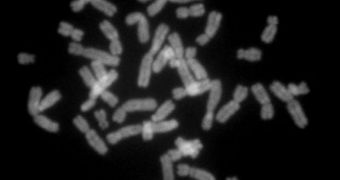When a live cell divides to form two exact replicas of its former self, the process is mainly controlled by centromeres, ensembles located around the middle section of chromosomes. Experts have now shown with greater quality the cascade of processes that allows for near-perfect cell division.
One of the most burning questions in biology has until now been related to how centromeres manage to ensure that each cellular copy is identical to the one before it, over so many divisions. Scientists believe that they finally have the answers.
Whenever cells divide, chromosomes are split in two, right from the point where the centromeres are located. It is the job of the latter to ensure that the division goes on perfectly, and they complete it by controlling the strings of motions that eventually separate the chromosomes.
In past studies, experts learned that centromeres are not made up exclusively of deoxyribonucleic acid (DNA). The structures also contain several types of proteins, which are very important to allow the centromeres exact control over chromosomal division.
These centromere proteins (CENP) were the target of the new scientific study, which was led by researchers at the Center for Chromosome Biology in Galway, Ireland. Details of the work appear in the June 14 online issue of the peer-reviewed journal PLoS Biology.
Professor Kevin Sullivan, the leader of the team, focused the study on CENP in living cells, watching the structures go about their business as the cells housing them divided. Fluorescent labeling methods were used to track the proteins of interest.
Whenever CENP were removed from the cell, the chromosomal division process went haywire, failing to complete properly, and leading to the failure of the new cells.
“By understanding the inner workings of this molecular machine at a deeper level, we can now think of how to build drugs that target cancer cell division with much greater precision,” Sullivan says
“It's important to see how basic research, aimed solely at understanding how life works, can contribute new ideas that support progress in medicine and therapeutics,” the team leader adds.
CENP-A was found to be the key protein of the complex, responsible for carrying the entire genetic material of the centromere. After this job was completed, CENP-T and CENP-W swooped in, and took care of the actual motions required to separate the chromosomes.

 14 DAY TRIAL //
14 DAY TRIAL //